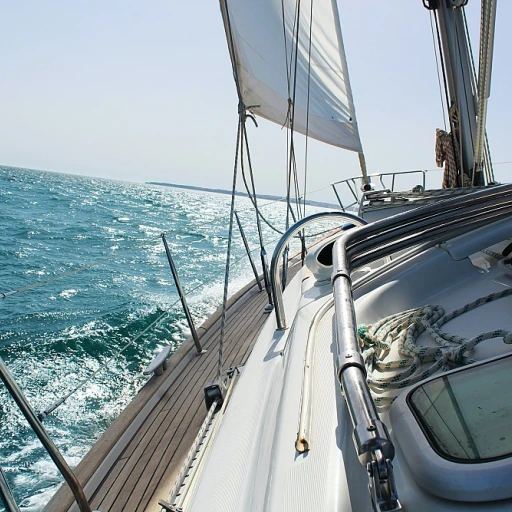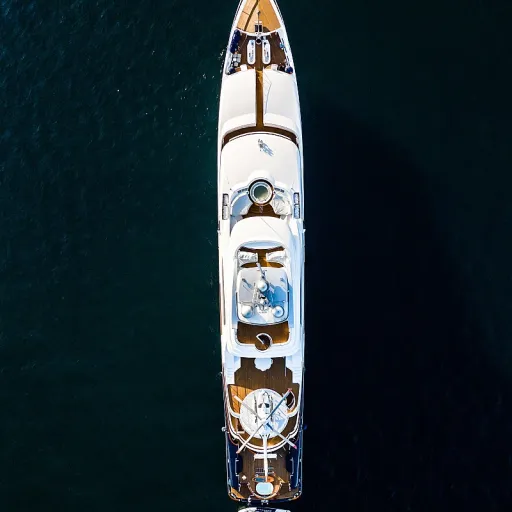
Understanding Dyneema loops in yachting
Why Dyneema Loops Matter in Modern Yacht Rigging
On today’s sailboats, Dyneema loops have become a staple for rigging sails, standing rigging, and even anchoring mooring setups. Their popularity is no surprise—Dyneema offers a unique combination of strength, low stretch, and light weight, making it ideal for demanding marine environments. Whether you’re splicing a whoopie sling, creating an eye splice, or setting up a brummel splice, understanding how to make and bury these loops is essential for both performance and safety.
In yacht rigging, a Dyneema loop is often used to connect hardware, secure sails, or replace traditional metal fittings. The process involves making a splice, typically a bury splice or brummel splice, to form a closed loop. The length of the bury—the section of rope tucked back inside itself—directly impacts the loop’s strength and reliability. A long bury is generally preferred for critical applications, but the right length depends on the specific use, such as deck hardware, end splices, or eye splices for standing rigging.
Forums and industry discussions often debate the optimal bury length, with many riggers sharing their experiences and practical tips. Mistakes in measuring or marking the bury can lead to weak splices or even failure under load. That’s why it’s important to understand not just the theory, but also the real-world practices that professionals use to ensure a secure lock and maximum strength.
From lock stitching to covering the splice with heat shrink or a protective cover, every step matters. As you explore the science behind the bury, industry guidelines, and practical techniques, you’ll see how these details contribute to the overall safety and performance of your boat. For more insights on optimizing yacht systems, check out this article on enhancing yacht performance with water exhaust mufflers.
Whether you’re a thread starter on a forum, sharing a link with your crew via email share or whatsapp email, or saving tips to your pinterest tumblr, mastering Dyneema splices is a skill every yacht enthusiast should develop. The next sections will dive deeper into the science, best practices, and real-world examples that can help you get the most from your Dyneema rigging.
The science behind the bury: why length matters
The Mechanics of a Strong Bury
When working with Dyneema on sailboats, the way you bury the tail of a splice is crucial for maintaining strength. The bury is the section where the tail of the rope is threaded back inside itself, creating friction and a lock that holds under load. This is especially important for applications like standing rigging, anchoring mooring, and rigging sails, where a failure could be catastrophic for your boat. A long bury increases the surface area where the strands interact, which means more friction and a stronger splice. The length of the bury directly affects how much load the splice can handle before slipping. For example, a short bury might seem neat on deck, but it can compromise the strength of your eye splice or whoopie sling. In contrast, a long bury ensures the load is distributed over more fibers, reducing the risk of the splice pulling out.Why Length and Technique Matter
The science behind the bury is all about maximizing the holding power of Dyneema. This fiber is slippery compared to traditional rope materials, so the bury length needs to be longer. Most forums and rigging guides recommend a bury of at least 60 times the diameter of the rope for critical splices. This is especially true for high-load applications like end splice or brummel splice in standing rigging. The brummel technique, often used for eye splices, adds a mechanical lock to the splice. However, even with a brummel, a long bury is still essential. Lock stitching can further secure the splice, but it should never replace a proper bury length.Factors That Influence Bury Performance
Several variables can impact the effectiveness of your bury:- Rope diameter and construction: Thicker Dyneema lines or those with a cover may require adjustments in bury length.
- Type of splice: Eye splices, bury splices, and splice brummel each have different requirements for optimal strength.
- Load direction: Splices in rigging sails or anchoring mooring lines experience different stresses than those used for deck lashings.
Industry guidelines for Dyneema loop bury length
What the Industry Says About Bury Length
When it comes to splicing Dyneema on sailboats, the length of the bury is a hot topic in both professional rigging circles and online forums. The consensus is clear: the bury must be long enough to ensure the strength and security of the splice, especially for applications like standing rigging, anchoring mooring, and rigging sails. But how long is long enough?
- General Rule: Most manufacturers and rigging experts recommend a bury length of at least 60 times the diameter of the Dyneema rope for a standard eye splice or whoopie sling. For example, with a 6mm Dyneema line, the bury should be around 36cm.
- Brummel Splice: If you’re using a brummel splice, the lock provided by the brummel helps, but a long bury is still essential for maximum strength. The brummel lock alone is not enough for high-load applications.
- Cover and Core: For ropes with a cover, the bury length may need to be adjusted. Always check the manufacturer’s guidelines for covered Dyneema lines, as the interaction between cover and core can affect the splice’s holding power.
Industry guidelines are based on extensive testing and real-world use. A short bury can lead to slippage or failure, especially under dynamic loads on deck or when the splice is used in critical areas like the end splice for sails or eye splices in standing rigging. Lock stitching or additional whipping at the end of the bury can add security, but it does not replace the need for a proper bury length.
For those looking for more detail on how bury length can impact rope performance, this guide on Dyneema bury and rope shortening offers a deeper dive into the science and practical considerations.
Always mark your bury length before starting, and keep a log register of your splices for future reference. Whether you’re working on a brummel splice, bury splice, or eye splice, following these guidelines will help ensure your boat’s rigging remains safe and strong.
Common mistakes when burying Dyneema loops
Typical Pitfalls When Making a Dyneema Bury
When working with Dyneema splices on sailboats, even experienced riggers can make mistakes that compromise strength and safety. Here are some of the most common errors seen in forums and on deck:- Too Short a Bury: One of the most frequent mistakes is not making the bury long enough. A short bury reduces the holding power of the splice, risking slippage under load. Industry guidelines exist for a reason—cutting corners on bury length can lead to failure, especially in standing rigging or anchoring mooring applications.
- Incorrect Brummel Technique: The Brummel splice is popular for creating secure eye splices, but if the lock is not properly formed, the splice can unravel. Missing a step or not pulling the tail through completely can weaken the lock, especially when rigging sails or making a whoopie sling.
- Poor Marking and Measuring: Not marking the correct bury length or misjudging the cover and core positions can result in uneven splices. Always use a log register or mark the strand and tail positions before starting the bury splice.
- Skipping Lock Stitching: Some riggers skip lock stitching, believing the bury alone will hold. However, lock stitching adds security, especially for high-load applications like end splices or eye splices in yacht rigging.
- Ignoring Strand Alignment: If the Dyneema strands are twisted or not properly aligned during the bury, the splice may not achieve optimal strength. This can also make the splice bulkier, causing issues when running through blocks or over the deck.
- Not Tapering the Tail: Failing to taper the tail before burying can create a hard spot, making the splice less streamlined and potentially catching on sails or deck hardware.
Why These Mistakes Matter
A poorly executed bury or splice can have real consequences on a boat. Whether you are making a Brummel splice for your standing rigging or a simple eye splice for a mooring line, the strength of your Dyneema connection depends on attention to detail. Inadequate bury length or a missed lock can lead to failure when you least expect it—sometimes with catastrophic results for sails, rigging, or even safety equipment. For anyone sharing tips on forums, or acting as a thread starter for new splicing techniques, it’s important to stress these common mistakes. Sharing a link or email share with best practices can help others avoid costly errors. Even on platforms like Pinterest, Tumblr, WhatsApp, or email, spreading knowledge about proper bury techniques helps keep the yacht community safer and more informed. Remember, taking the time to measure, mark, and execute each splice with care will ensure your Dyneema rigging performs reliably, whether you’re cruising or racing.Practical tips for measuring and making a secure bury
Steps for Accurate Measurement and Secure Splicing
Getting the bury length right is essential for Dyneema splices on sailboats. Whether you are working on a brummel splice, bury splice, or creating a whoopie sling, precision in measuring and execution will directly impact the strength and reliability of your rigging. Here are practical tips to help you achieve a secure bury every time:- Marking the Bury: Use a permanent marker to clearly mark the start and end points of your intended bury on the Dyneema strand. This helps maintain accuracy, especially when working on deck or in low light conditions.
- Measuring the Length: Industry forums and rigging guides often recommend a bury length of at least 50 times the rope diameter for standing rigging or anchoring mooring. For running rigging or less critical applications, 30 times the diameter may be sufficient. Always check the latest manufacturer recommendations for your specific Dyneema cover or core.
- Preparing the Tail: Taper the tail of the Dyneema rope before burying. This reduces bulk and ensures a smoother transition, which is crucial for both strength and aesthetics of eye splices or end splices.
- Executing the Splice: When performing a brummel splice or eye splice, make sure the lock is properly formed. Pull the tail through carefully to avoid twisting the strands. Lock stitching can be added for extra security, especially in high-load applications like rigging sails or standing rigging.
- Registering Your Work: Keep a log register of all splices and rigging work on your boat. Note the date, type of splice, and bury length. This helps with future maintenance and ensures consistency across your sailboat’s rigging.
Common Tools and Best Practices
- Use a fid or splicing needle to guide the Dyneema through itself, especially for long buries.
- Double-check your measurements before making the final cut. A too-short bury can compromise strength, while an excessively long bury may be unnecessary and waste material.
- After completing the splice, test the strength by loading the line gradually. This helps identify any issues before the splice is put into service on deck.
Sharing Knowledge and Learning from Others
The yacht industry is full of experienced riggers who regularly share tips and techniques on forums and social media. Don’t hesitate to post your questions or share a link to your work for feedback. Platforms like Pinterest, Tumblr, WhatsApp, and email share options make it easy to connect with other enthusiasts. Thread starter posts and detailed tutorials can help you refine your skills and avoid common mistakes. Applying these practical tips will help ensure your Dyneema splices are strong, reliable, and ready for the demands of modern sailing. Whether you’re working on eye splices for sails, lock stitching for rigging, or bury splices for anchoring mooring, attention to detail is key to safety and performance.Real-world examples from the yacht industry
Lessons from the Deck: How Yacht Crews Bury Dyneema Loops
Across the yacht industry, the approach to burying Dyneema loops is shaped by real-world demands—whether it’s rigging sails for a regatta or setting up standing rigging for a long ocean passage. The length of the bury, the type of splice, and the method used can make a significant difference in strength and reliability.- Racing sailboats often use long buries for eye splices in Dyneema, especially where loads are high. Crews report that a bury length of 60 to 72 times the rope diameter is common for critical applications like halyards and sheets. This ensures the splice will hold under repeated shock loads and aggressive maneuvers.
- Brummel splices are favored for their locking mechanism, especially in applications where the tail might be subject to movement or vibration. Many riggers add lock stitching or a cover over the splice for extra security, particularly on deck where abrasion is a risk.
- Whoopie slings and adjustable loops, popular in anchoring mooring setups, rely on a long bury to maintain strength when the load shifts. Forums and log registers from experienced boat owners highlight the importance of marking the correct bury length before starting the splice, to avoid having to redo the work.
- End splices and eye splices in Dyneema are often used for attaching sails or hardware. The consensus is that a longer bury—sometimes even exceeding manufacturer guidelines—provides peace of mind, especially when the splice will be hidden under a cover or inside a mast.
Common Practices and Shared Advice
Many yacht crews keep a thread starter or log register to document their splicing work, noting the length of each bury and the method used. This practice helps maintain consistency across the boat’s rigging and makes it easier to share link references or advice with other sailors via email share, whatsapp email, or even on platforms like pinterest tumblr. When measuring for a bury splice, professionals recommend:- Using a permanent marker to mark the start and end points of the bury
- Pulling the tail through smoothly to avoid bunching the strands
- Lock stitching the splice brummel for extra security, especially in high-load areas













